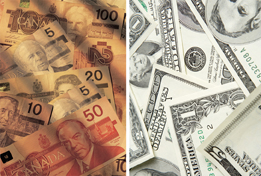Lesson 1
1. Lesson 1
1.5. Explore
Module 6: Proportional Reasoning
Explore
Rates can be compared by using one of the following two methods:
- Compare the rates using the same unit where the second terms are numerically the same.
- Write the rates as unit rates where the second terms are the same units and are equal to 1.
For instance, in Try This 1, you may have chosen to compare rates or you may have chosen to compare unit rates to determine whether fuel is more expensive than bottled water. You might have calculated the cost of each item per litre (unit rate), or you might have determined the cost per 500 mL (rate). You might also have determined how much it would cost for 55 L of bottled water and then compared that to the price of 55 L of gas.
Each of these strategies is correct. The key in comparing rates is to be certain that you are comparing the same things. Remember that you can’t compare apples to oranges.
Read “Example 1: Comparing two rates expressed in different units” on pages 445 and 446 of your textbook. As you read, consider how the strategies used in Natasha’s and Dimitri’s solutions compare to the strategy you used to determine whether fuel or bottled water had the lower price.
Self-Check 2
Complete “Practising” questions 4, 5, 7, and 8 on page 451 of your textbook. Answer
The lowest rate is not always the most appropriate rate. In the price examples you looked at earlier in this lesson, you were trying to determine which item had the lowest rate or unit rate. In other words, you wanted to determine which item cost the least amount of money or was the best buy. So you wanted the lowest rate or unit rate. In some cases, the higher rate is preferred.

Comstock/
Thinkstock
Rajesh and his family were thinking of making a trip to the United States. Rajesh knew that they would need to purchase some American dollars for the trip. His bank posts the exchange rate that gives the value of one Canadian dollar compared to the value of one American dollar.
The first time he checked the currency exchange, Rajesh found $1.00 Cdn was worth $1.023 601 U.S. This meant he would get $1.02 U.S. for every Canadian dollar he exchanged. The next week when he checked, he found that $1.00 Cdn was worth $1.035 501 U.S. He realizes that, at this exchange rate, he could exchange $1.00 Cdn for $1.04 U.S. In this case, Rajesh was looking for a higher rate so he would get more American money for his Canadian money when he went to exchange the money.

Canadian money: Stockbyte/Thinkstock; American money: BananaStock/Thinkstock
Share 2
With another student or appropriate partner, identify three other situations where a higher rate or higher unit rate would be preferred. For each situation, determine what type of rate would be used to represent the situation.